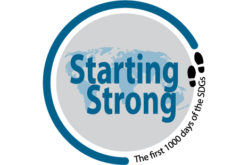Improving women’s conditions should go beyond the ticking of indicator boxes
Written by Shuvechha Khadka and Ajaya Dixit, researchers at the Institute for Social and Environmental Transition – Nepal (ISET-N). They have recently launched a new paper – The changing intersection of society and development goals: An examination aimed at improving policy-making– part of the Southern Voice Initiative.
Too often MDG and other national-level development indicators suggest that, indeed, we are meeting the laudable goal of “leaving no one behind” and we prematurely pat ourselves on the back for a job well done.
The stark reality behind those numbers is more unsettling.
– First, indicators are rarely disaggregated, so they conceal shocking disparities among various population sub-groups. In Nepal, much data is not even disaggregated by a category as large as sex.
– Second, indicators — ignoring the above reservation — are cold facts, and the subtle nuances of life can never be reduced to a number.
The following story from rural Nepal illustrates these observations well.
In the mountainous regions to the north of the nation, the government provides every expectant mother who eschews a traditional home delivery to travel to a government health facility to deliver her child with a “transportation incentive” of NPR 1,500 (USD 15) in cash in addition to free maternity services, including surgery, and some medicine.
Women who have four prenatal check-ups get and additional NPR 400 (USD 4).
Payment for accessing life-promoting services. What could be better? On paper, at least.
On the ground, delays in the release of local budgets has not only delayed the payment of such incentives but also seriously undermined the quality of the services. In one remote mountain district, the slowness of the public health office deprived 239 women of both incentives and good-quality services. Infrastructure and equipment are in poor condition, essential medicines are lacking, and skilled health personnel refuse to staff far-flung health facilities.
In addition, getting women to access better maternal health care barely scratches the surface of more deep-seated problems.
Women in rural Nepal face multiple challenges, which put them at risk for childbearing. Anemia and other micronutrient deficiencies, lack of household-level decision-making powers, little education, and low social status are just a few among them.
Even education, which has been touted as a success now that girls’ enrolment in primary school has equaled that of boys, is plagued by problems. While about 94% of girls enroll in primary school, by grade 8 (the last year of basic education) that figure has dropped to about half and declines still further in upper secondary school (grades 9-10). Disparities between urban and rural areas are also stark. Female youth literacy in cities is an impressive 92% but that figure drops to just 76% in rural areas.
The reasons for the high drop-out rate are complex. They include socio-cultural prejudices against “wasting” money on girls who marry into and take dowries to other families; the geographical location of schools, many of which are a couple of hours away; sexual violence, harassment, and intimidation; and poverty-related pressures for girls to work. Lack of sanitation facilities at schools is another significant disincentive. A recent study conducted by the Department of Education found that in 35% of the nation’s 29,100 government schools’ girls dropped out because there were no separate girls’ toilet facilities.
These challenges aside, Nepal’s women have, in fact, made considerable gains in recent years, in part due to the effects of the decade-long Maoist insurgency that began in 1996. The civil conflict forced two key changes upon women: as men joined the People’s Army or migrated, they had to pursue economic activities outside of their traditional agricultural roles in order to support their household livelihoods, and they became more engaged politically.
The Abortion Bill of 2002 reduced maternal mortality dramatically, and other legislation – like the Domestic Violence Act of 2009 – has also supported women’s rights. Investments by donor agencies, government and non-governmental organizations working on issues like women’s health, safe motherhood, women’s education, equality and empowerment, have also contributed towards Nepal meeting its MDG goals relating to women.
Even MDG targets themselves have spurred improvements in women’s education and health and addressed gender gaps. A quick glance at the numbers shows just how much:
| Indicator | 1990 | Today |
| Ratio of girls to boys enrolled in primary school | 0.56 | 1.02 |
| Female youth literacy | 32.7 | 79% (85% overall) |
| Maternal mortality | 850 | 170 (2013) |
| Infant mortality | 108 | 46 (2011) |
| Under-five mortality | 162 | 54 (2011) |
Collectively, these achievements are the result of four key interventions:
– Networking: Both the education and the health sectors have large networks that facilitate the implementation of development work. The polio immunization campaign is a renowned example.
– Fund flow:Both donors and governments have invested heavily in these two sectors, and a good portion of household remittances from the growing number of Nepali labor migrants is invested in health and education.
– Volunteerism: Initiatives such as the establishment of aama samuha (mothers’ groups), facilitated by around 53,000 community female health volunteers, has made a big difference.
– Systems and services:More roads and access to transport, communication and media have helped to make the range of efforts more effective.
We do not deny the importance of indicators – far from it. They are essential for making the comparisons with baseline figures that enable us to measure progress. They are also necessary for government departments, donors and other stakeholders to establish targets for allocating scarce resources.
In post-2015 development goals, however, we need to move beyond a simplistic application of indicators, to something that is more than a box ticked “fulfilled.” We need, instead, a holistic approach to implementing development activities which takes account of the social context in its entirety and adopts multiple agencies and methods of action.
1,438 total views, 1 views today






